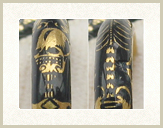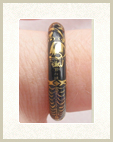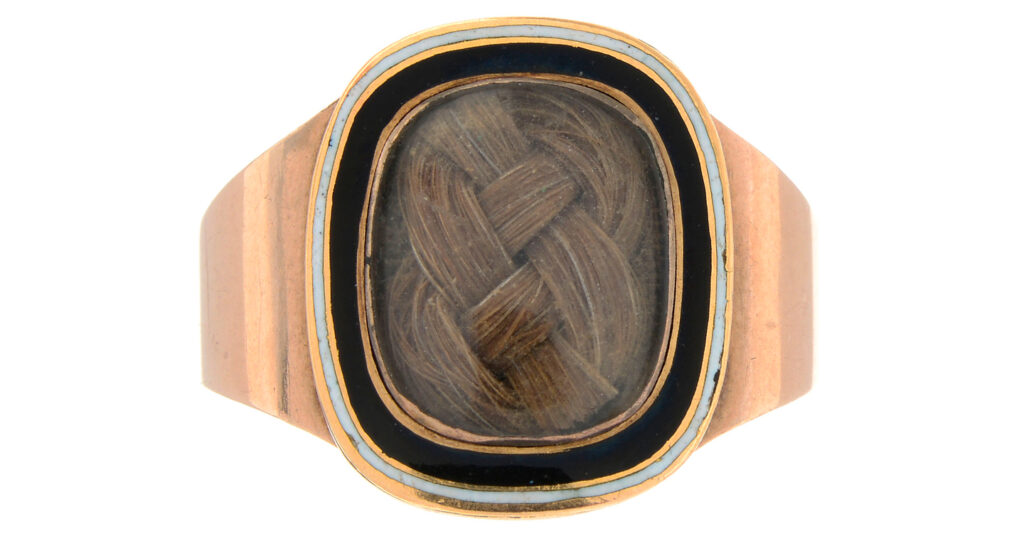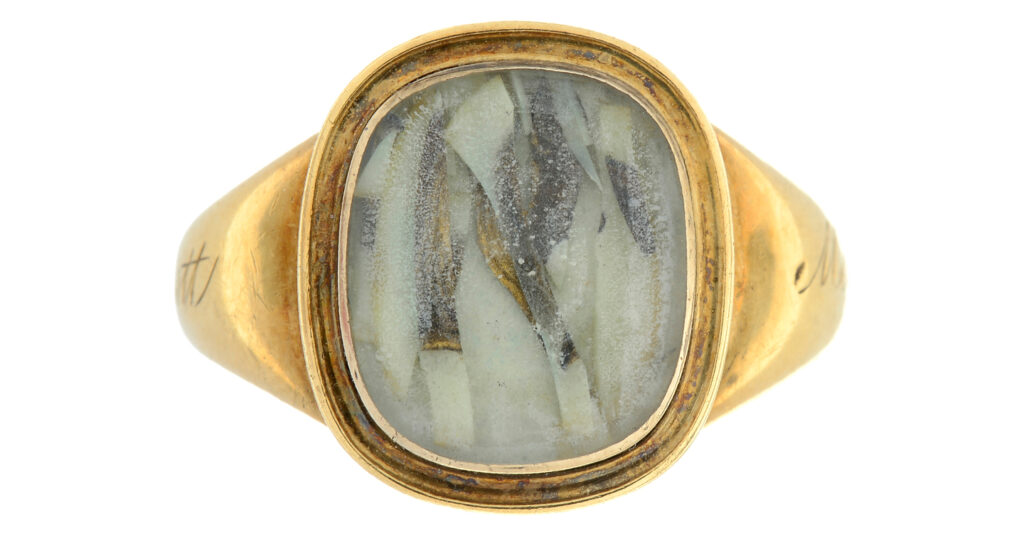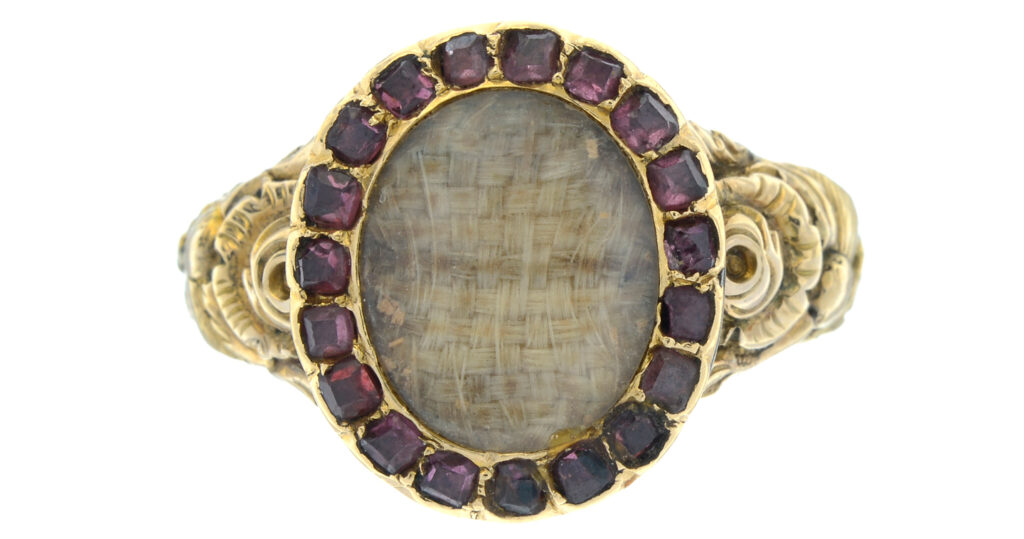Spotlight On: Ellen Savage Mourning Ring
The exceptional quality and design of this piece is relevant for its place in time. The decorations of the skeleton, hourglass, scythe and shovel were still used in the 1740s, but not to the extent as it had been. This ring is a beautiful example of evolution in its art and the style it emulates from the late 17th Century. Compare it to the style of the piece above from 1680 and the similarities are quite deep. Artwork surrounding this piece is much more detailed and not as naive as it had previously been, note the skeleton and the level of the skull’s quality. Its style, having large depictions of the evolved memento mori motifs, is quite unusual, as pieces that would have the motifs tended to be small and set under crystal.
During the period of around 1700-1760, there was a distinct change in the style of rings, but a clear evolution from what had come before. Shanks became more delicate, some imitating scroll work in gold around the edge with enamelling over the top and an inscription over that.
To indicate pieces from this time, the shank is often a good point of reference due to their variation. The popularity of the Rococo style has a lot to do with this, the greater the delicacy and intricate form of the shank, the later into its period it becomes.
Country: England
Year: c. 1745
Dedication: Ellen Savage ob 16 Oct 1745 at 83




